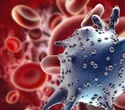Astodrimer sodium exhibits potent virucidal and antiviral activity against SARS-CoV-2 in vitro
Complementary prevention methods are considered as an effective response to the ongoing pandemic caused by severe acute respiratory syndrome coronavirus 2 (SARS-CoV-2).
Researchers from the US and Australia recently conducted some studies to assess the in vitro antiviral and virucidal (irreversible) activity of astodrimer sodium against SARS-CoV-2.
Astodrimer sodium is a dendrimer having broad-spectrum antimicrobial activity including against enveloped viruses both in in vitro and in vivo models marketed for antiviral as well as antibacterial applications.
Astodrimer sodium irreversibly reduces SARS-CoV-2 infectivity within a minute of exposure
The researchers reported that astodrimer sodium is capable of inhibiting SARS-CoV-2 replication in Vero E6 and Calu-3 cells. It had 50% effective concentrations (EC50) for 1. reducing virus-induced cytopathic effect of 0.002 to 0.012 mg/mL in Vero E6 cells and 2. release of infectious virus by plaque assay of 0.019 to 0.032 mg/mL in Vero E6 cells and 0.031 to 0.037 mg/mL in Calu-3 cells.
The selectivity index (SI) of these assays was 2197. Astodrimer sodium was also shown to be virucidal, and it irreversibly reduces SARS-CoV-2 infectivity by >99.9% (>3 log10) within a minute of exposure. It reduces infectivity up to >99.999% (>5 log10) at concentrations of 10 to 30 mg/mL in Vero E6 and Calu-3 cell lines.
Astodrimer sodium strongly inhibits virus-host interactions across many SARS-CoV-2 variants
Astodrimer sodium also inhibited SARS-CoV-2 infection in a human airway epithelial cell line. The data from all investigations were similar and were consistent with the potent antiviral and virucidal activity as a result of irreversible inhibition of virus-host interactions, as previously shown for other viruses.
According to the authors, the data from these studies and previous studies that investigated the antiviral activity of astodrimer sodium against HIV-1, HSV-1, and HSV-2, demonstrate that the compound has antiviral activity against diverse SARS-CoV-2 variants, and it interferes with the early virus-cell interaction events. Hence these studies support the ability of astodrimer sodium to prevent virus entry and attachment, thus reducing or preventing infection or spread to other cells.
Astodrimer sodium inactivates viruses by tightly binding to viral envelope proteins
Many viruses use negatively charged heparan sulfate proteoglycans (HS) on the plasma membrane of the cell as a means to scan the cell surface, and to drive the formation of virus-receptor complex and viral entry. Data indicate that the interaction between astodrimer sodium and gp120 may physically block HIV-1 association with HS and thus inhibit the subsequent functions of the virus-receptor complex.
Virucidal assays using astodrimer sodium showed that it did not disrupt the HIV-1 particle or lead to the loss of gp120 spike protein from the virus's surface. This suggests that astodrimer sodium achieves irreversible viral inactivation by binding tightly to the proteins on the viral envelope.
Findings warrant further investigations on the potential of astodrimer sodium as a topical agent for COVID-19 treatment
In summary, a broad-spectrum antiviral astodrimer sodium was assayed for anti-SARS-CoV-2 activity in vitro. Astodrimer sodium inhibited multiple SARS-CoV-2 strains in multiple cell lines, with a SI of up to 2197. It also irreversibly reduced SARS-CoV-2 infectivity by >3 log10 (>99.9%) after ≥1min exposure.
Further studies are needed to confirm if astodrimer sodium binds to the spike protein of SARS-CoV-2 and blocks viral attachment to the host cell. Considering the significantly high SI and in vitro effectiveness of astodrimer sodium, further investigations are needed on its potential as a topical agent for SARS-CoV-2 treatment.
#ResearchChemistry, #ChemicalInnovation, #Science, #ScienceResearch, #ScientificResearch, #ResearchAndDevelopment, #ChemistryEducation, #ChemistryExperiments, #ChemistryLab, #ChemistryStudents, #ChemistryStudy, #OrganicChemistry, #InorganicChemistry, #PhysicalChemistry, #AnalyticalChemistry, #Biochemistry, #MaterialsChemistry, #TheoreticalChemistry, #AppliedChemistry, #MedicinalChemistry
Visit Our Website : researchchemistry.org
Nomination Link : researchchemistry.org/award-nomination/
Registration Link : researchchemistry.org/award-registration/
Member Link : researchchemistry.org/member-submission/
Contact Us: contact@researchchemistry.org
Social Media Links
Instagram : www.instagram.com/chemistryaward
Twitter : x.com/Chemistryaward
Pinterest : in.pinterest.com/chemistrymails




Comments
Post a Comment